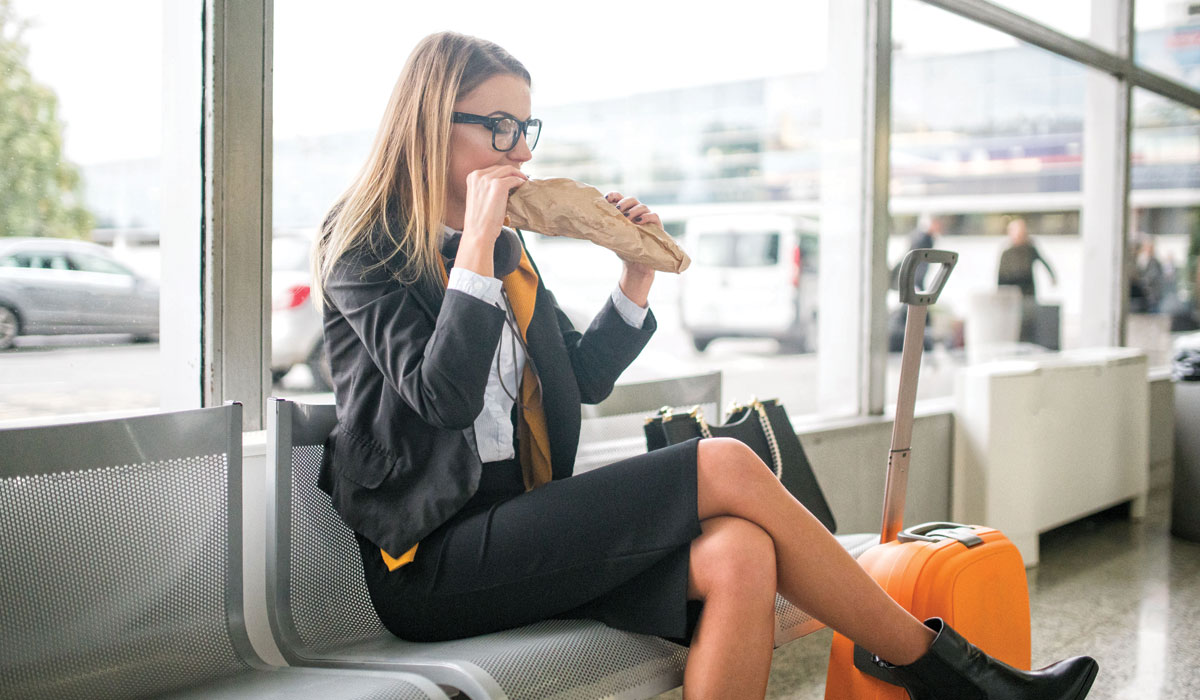The youngest millennials are now in their early 20s, and the oldest baby boomers are in their 70s, meaning that the group catching flights, taking trains, and hitting the highways for business trips is one that spans many decades. Business travelers are an important demographic for restaurants. Shannon Delaney, vice president of marketing for Dinova—a B2B service for connecting traveling diners with restaurants—says that business travelers typically spend 50–100 percent more than non-business diners.
With such a vast age range on the road for business travel, it’s hard to draw conclusions about the group and their eating-out preferences, but some commonalities have come to light. Delaney says that most of them value both trusted national brands and local gems—59 percent opt for brands they know, while 77 percent search for local indies.
However, broken down, the business travelers most likely to select quick-serve and fast-casual restaurants are millennials. According to “Is Business Dining Your Restaurant’s Silver Lining?” a 2018 report from Dinova and the Global Business Travel Association, 51 percent of millennials say they choose quick serves, compared with 31 percent of Gen Xers and 20 percent of boomers. And 63 percent of millennials say they also choose fast casuals, compared with 51 percent of Gen X consumers and 41 percent of baby boomers.
Doing research
The majority (63 percent) of business diners do research before they go out to eat, but what they’re looking for depends on their age. Millennials want a restaurant that’s close by; Gen X diners base their decisions largely on reviews, though proximity is also important; and boomers are fully review-reliant. But health is important to this group, too, and 76 percent say they try to stay healthy on the road. Because of this, 64 percent look for healthier menu options, 23 percent seek out vegetarian or vegan food, 43 percent like to see published nutrition facts, and 18 percent are looking for gluten-free options.
The time of day when business travelers choose to eat out is also stratified by age group. Dinner is the most attractive time for baby boomers to wine and dine, and 52 percent of them choose a restaurant for the third meal of the day. Only 36 percent of both Gen Xers and millennials look for a dinner spot. Lunch is the next popular, with 38 percent of boomers, 29 percent of Gen Xers, and 34 percent of millennials choosing to eat out at midday. Breakfast is when Gen X and millennial travelers crowd out the boomers in the restaurant queue—18 percent of each group start their day eating out, in contrast with only 8 percent of baby boomers.
But they don’t always want to go out to eat, especially millennials. “Millennials are six times more likely to go back to their rooms and order delivery than other generations,” Delaney says. “The theory, based on the other data we have, is that millennials are so focused on optimizing their work day that they are ready to decompress by the end of the day.”
Overall, 35 percent of Dinova’s respondents said they’d used their mobile device to place a delivery order.
Using technology
There’s no escaping the role technology plays for all business travelers while they’re on the road, too. Booking tables, reading reviews, and ordering takeout have become digital activities—63 percent of those surveyed use dining-related apps extensively. As for whom this group trusts, Yelp was the clear winner of the app competition and was preferred by 53 percent of respondents, followed by TripAdvisor, Grubhub, OpenTable, and Uber Eats.
But business travelers most frequently use mobile devices when making dining decisions for a trio of purposes that don’t involve apps; Dinova’s study says that 54 percent use mobile devices to search for local places to eat, 51 percent use them to research menus, and 47 percent make mobile reservations.
What can make dining out even more attractive to business travelers? Loyalty programs, especially those that offer rebates to the company, points to the individual, or the ability for consumers to gift points to a charity. The third option was the top choice for millennials and Gen X diners, while baby boomers prefer earning points for themselves.
“Restaurant loyalty programs are almost table stakes at this point, so of course diners’ rewards expectations are growing,” Delaney says. “Restaurateurs who really want to stand out will think beyond free food and instead look at other ways they can reinforce diners’ attachment to their brands. If you can associate loyalty to your restaurant with the messages your diners want to project about their own personal brands, that’s when your program will really pay off.”












